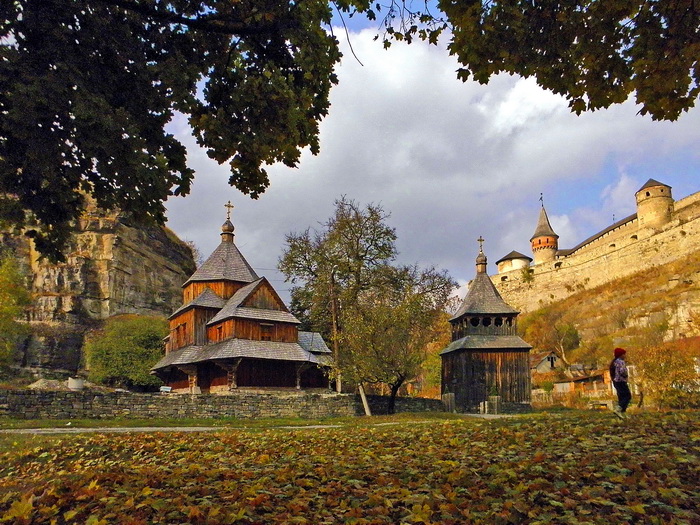List of key locations:
The Krasinskis’ Palace in Dunaivtsi
Kirche in Dunaivtsi
The Demyankovets spring
The Minkovets Arboretum
Count Markhotsky’s summer residence
The Burbun Waterfall
Sokilets and Tomashev’s well
The Helminskyis’ Palace
The Waterfall of the haidamak Gerasimovych
Brief introductory description:
Staroushytskyi region is a picturesque corner of the Carpathian-Dnister lands. Landscapes of forested mountains, the majestic flow of the Dniester river, springs with healing water make this place an earthly paradise. Many legends and narrations were born here and live in people’s memory.
We invite you to delve into the history of our region and discover all the Legends of the Ponyzzia!
Departure from Khmelnytskyi city
Along the way you can visit:
Holy Intercession Church in Sutkivtsi (brick temple-type, built in honor of the Intercession; represents both the fortress and the temple).
The Waterfall in Maliiivtsi and The Orlovskyis’ Palace (рalace Park was one of the best in Podillia. There was a chapel in the palace. It also had a large library with 7,600 objects, as well as one of the largest numismatic rooms created by the Count, Primate Ignatius Krasytsky of Poland. A special historical and religious value holds a limestone rock with an 18-meter artificial waterfall and a two-story grotto.
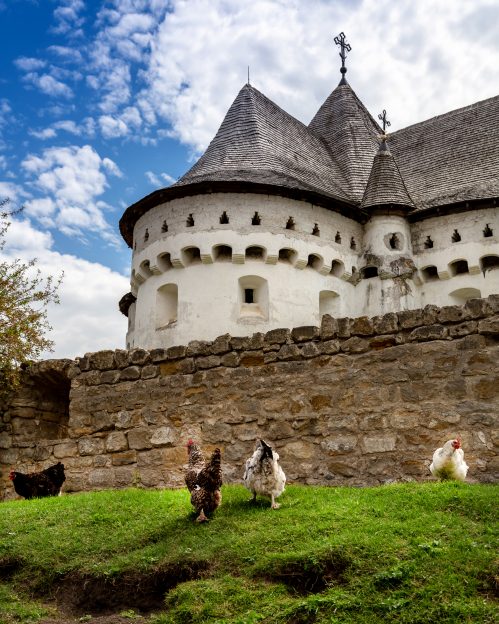
The beginning of the tour in Dunaivtsi
The Krasinskis’ Palace in Dunaivtsi
Around 1782, the Potockis’ estate in Dunaivtsi bought Jan Krasinski (1756–1790), an elder from Opinogur, and settled here with his wife Antonina (maiden name – Chatka). In 1819 the palace was first reissued to Antonina’s grandson – Sigmunt Krasinski, and later in 1826 to his father – Vincent.
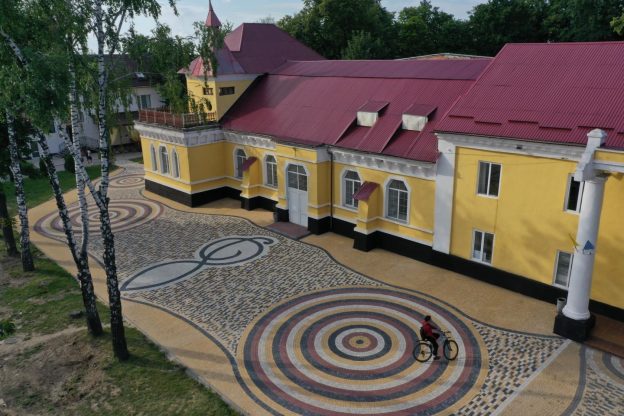
Kirche in Dunaivtsi
In fact, the prehistory of the building near the historic center of Dunaivtsi and the ancient residence began in 1790. At that time, after the death of the head of Opinograd, Jan Krasinski (1756 – 1790), his wife Countess Antonina started to “rule” the town. She was a very influential lady in the region.
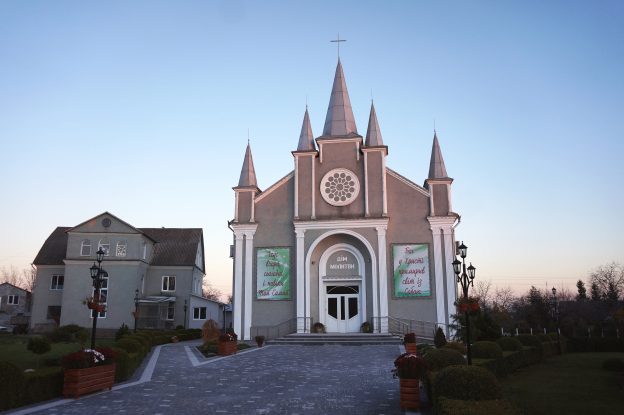
Moving to Mynkivtsi
Along the way we visit Demyankovets spring and collect healing water
The Demyankovets spring.There are many unusual places in the region where water is thought to be healing. Such spring is located behind Dunaivtsi, in the direction of the village of Demyankivtsi. For several years now, adults and children have been coming to it from all over to take on some water, drink and rest from the road. Recently a bathhouse has been set up here and the bravest are boldly descending into the blessed coolness. The same goes for winter, when the water temperature is only 3-4 degrees! Nevertheless, after such bathing nobody caught cold yet, on the contrary, there are many cases when this water helped to overcome illnesses.
The Minkovets Arboretum
More than 200 species of trees grow in the park. The central composition of the park is an alley of western columnar and boxwood evergreen. Barberries, birches and junipers grow on both sides of the alley. The nesting method was used for planting maple and yew berries. On the territory of the park grow: broad Chinese thuja, western thuja, maidenhair tree, black pine, Scots pine, Weymouth pine and cedar (Siberian).
Count Markhotsky’s summer residence
Ignatius Sthybor-Markhotskyi inherited the town of Mynkivtsi with all its filwarks and hamlets in 1788. He declared his lands Mynkovets State. As a real state, it had its borders marked by pillars with the inscription “The border of the Mynkovets State from the Russian Empire.” In addition, they produced their own money for domestic use, and relations between residents were based on legislation. One of the first and most serious steps of the ruler of the Mynkovets State was the liberation of his peasants from serfdom and granting them personal freedom.
3pm Lunch in the nature
Moving to the Lysets village.
The Burbun Waterfall
The Bobrivetsky Nature Reserve is located in the canyon of the Bobrivka River. In one of the gorges of the canyon, the river forms a 5 m waterfall that flows into a small lake. The gorge is formed of shell rock and silicon rocks. The temperature is quite low. The lake has a rare turquoise hue of water.
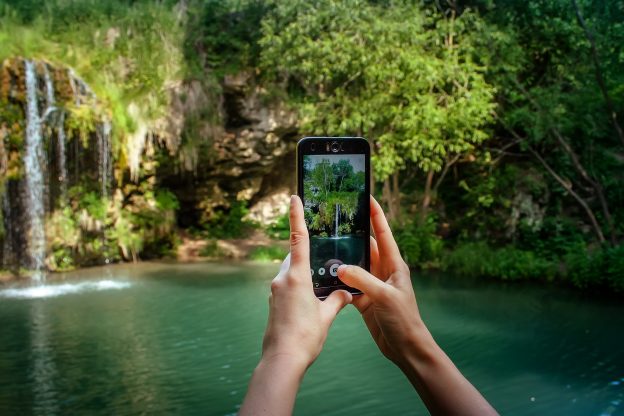
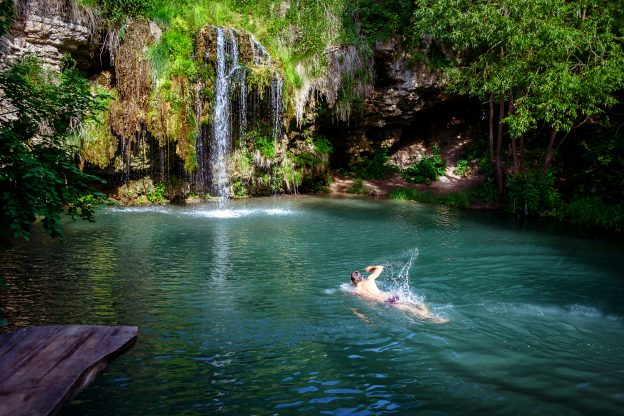
Moving to the Sokilets village
Sokilets and Tomashev’s well
During the Turkish siege, the people’s avenger Tomash destroyed the cannon. Enemies caught the hero and quartered him on a stone block. Later, a spring, popularly called Tomas’ Well, broke through the stone. The descendants carved a cross on the block, which has survived to this day.
Moving to The Great Zhvanchik village
The Khelminskyis’ Palace
The beginning of the construction of the estate dates back to 1868. In 1881, an elegant tower was added to the palace, which radically changed the look of the building. After the death of the owner – Ignatius Helminsky, the estate was inherited by his sons Matthew and Sigismund. It is known that first Sigismund lost his half of the inheritance to the landowner Krupetsky, and later in 1902 Krupetsky bought the other half, becoming the owner of the palace. In 1917 the gentleman left for Poland. During the revolutionary events, the peasants looted the estate. A local priest saved the building from total destruction.
Moving to the Trybukhivka village.
The Waterfall of the haidamak Gerasimovych and the Stalker estate. On the opposite side of the river Studenytsia, in the village of Trybukhivka in the Danube region, on the right side of the mountain there is a unique spring Gerasimovych. According to a legend, a haidamak with this name lived here. The water in the spring is vital and it beats under such pressure that it even forms a waterfall.
Dinner, campfire.
Returning to Khmelnytskyi city

